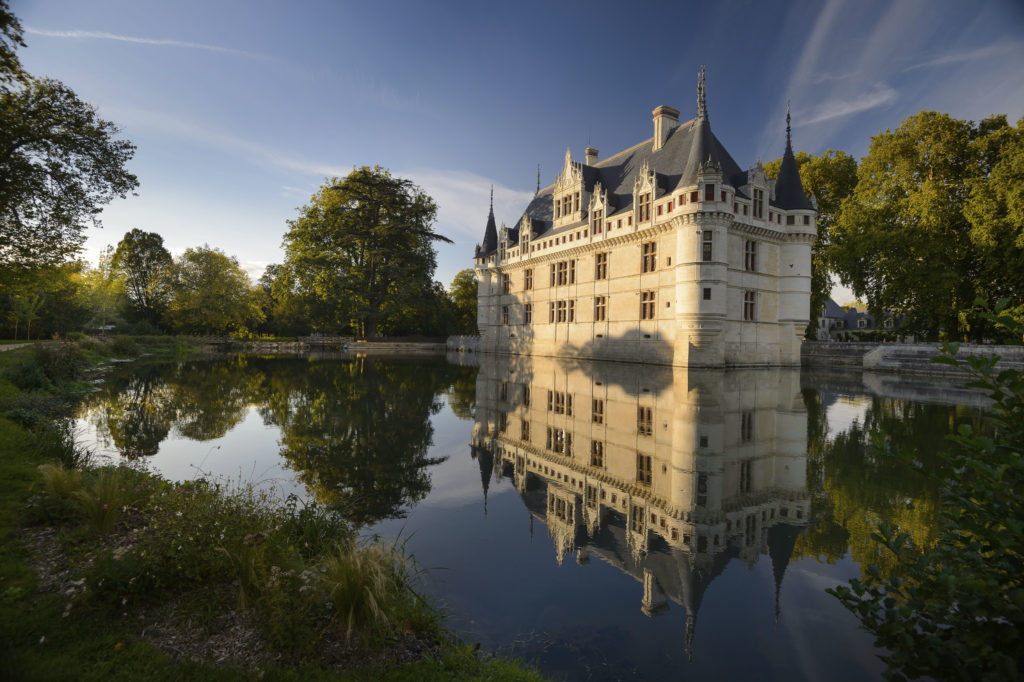Chateau of Azay-le-Rideau
– Destination –
Home » The land of 7 chateaux » Château d'Azay-le-rideau
"... A facet cut diamond set in the Indre... " Honoré de Balzac, le Lys dans la vallée (1836)
Symbol anchored in the collective imagination with its reflection on the water miror, the chateau of Azay-le-Rideau is an architectural masterpiece of the first French Renaissance. A subtle alliance of French traditions and antique-inspired decorations from Italy, it is a true icon of the new art of building and living in the Loire Valley of the 16th century.
Its successive owners have helped make it one of the most harmonious and refined architectural gems in the Loire Valley.

Gilles Berthelot, treasurer of François Ier, and Philippe Lesbahy, his wife, have a refined residence built on the foundations of an old castle, which they inscribe within modernity, that is to say in the taste of the Italian Renaissance. They built the extraordinary straight staircase, known as "rampe-sur-rampe", one of the very first in France, and the beautifully ordered main building.

But after a dazzling social rise, Gilles Berthelot is struck with disgrace, which condemns him to leave an unfinished castle.
At the beginning of the 17th century, Antoinette Raffin, lady of honor to Queen Margot, restored its magnificence by decorating it richly. The outbuildings and the main gate were built in 1675.
In 1791, the chateau was bought by the Marquis Charles de Biencourt. The greatest care was taken in the restoration of the chateau by the Biencourt family throughout the 19th century.
Their pronounced taste for the Renaissance led them to modify and redevelop the landscaped park, to modernize the interior decor, which remains today, furnishing it with the greatest care.

Moreover, the chateau, open to visitors from the middle of the 19th century, is marveled at by travelers, and in particular by Prosper Mérimée and by Honoré de Balzac.
Offered for sale by Charles-Marie-Christian de Biencourt in 1899, the State became the owner of the Château of Azay-le-Rideau in 1905, empty of any furniture. It is now open to visitors, managed and animated by the Center des monuments nationaux which carried out a major restoration project between 2014 and 2017.







